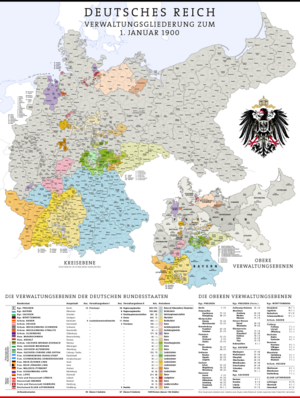Ilẹ̀ Ọbalúayé Jẹ́mánì
Ile Obaluaye Jemani

 | Àyọkà yìí tàbí apá rẹ̀ únfẹ́ àtúnṣe sí. Ẹ le fẹ̀ jù báyìí lọ tàbí kí ẹ ṣàtúnṣe rẹ̀ lọ́nà tí yíò mu kúnrẹ́rẹ́. Ẹ ran Wikipedia lọ́wọ́ láti fẹ̀ẹ́ jù báyìí lọ. |
Itokasi àtúnṣe
- ↑ German constitution of 1871
- ↑ "German Empire: administrative subdivision and municipalities, 1900 to 1910" (in German). Retrieved 2007-04-25.
- ↑ "Population statistics of the German Empire, 1871" (in German). Archived from the original on 2007-04-05. Retrieved 2007-04-25.
🔥 Top keywords: Ojúewé Àkọ́kọ́Pàtàkì:SearchOgun Àgbáyé Ẹlẹ́ẹ̀kejìWikipedia:Abẹ́ igiÀsà oge ṣíṣẹ́ ní ilè yorùbáFáìlì:Adeniran Ogunsanya.jpgPàtàkì:ÀwọnÀtúnṣeTuntunWikipedia:Nípa Wiki HowWikiWiki HowÀṣà Ìsọmọ-lórúkọ nílẹ̀ YorùbáAustrálíàỌ̀rọ̀-Orúkọ (Èdè Yorùbá)Èbúté:Àwọn ìṣẹ̀lẹ̀ ìwòyíWikipedia:Èbúté ÀwùjọÈdè YorùbáÌrànlọ́wọ́:Ẹ̀kaÀsà Ìgbéyàwó ní ilè YorùbáÀrokòDiamond JacksonIṣẹ́ Àgbẹ̀Ìbálòpọ̀MediaWikiApple Inc.67085 OppenheimerInternetYemojaOperating SystemLẹ́tà gbẹ̀fẹ̀Isaiah WashingtonÀṣà YorùbáÌbánisọ̀rọ̀-ọ̀ọ́kánWikipedia:Contact usC++File Transfer ProtocolHTMLOwe YorubaKetia MbeluLinda Ikeji


